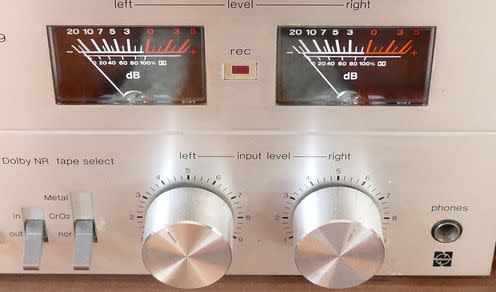Alan Blumlein: the prolific British inventor who gave the world stereophonic sound

The early 20th century was a golden era for scientists, engineers and inventors. Among those from Britain alone, a quick zip through the archives reveals names including Alan Turing, Ernest Rutherford, Frank Whittle, John Logie Baird, William Thomson Kelvin, and William Shockley – not to mention many others from all over the world. Another name that should be remembered among this esteemed company is the British engineer and inventor Alan Blumlein, who this year is to be given a posthumous Grammy Award for technical services to music, 75 years after his death
The extent of Alan Blumlein’s electronic wizardry is apparent from the 128 patents filed under his name while working at EMI. While he worked on electrical elements of many transmission and communications media including telephone lines, television and radar, perhaps his most significant invention is what we now know as stereophonic audio.
His technique used two microphones to record audio, still known as the Blumlein pair and used today, where two microphones are placed at right angles to each other. These microphones should be a special type known as dipole microphones, which can pick up sound in two directions, that is, from the front and the rear.
When placed at right angles to each other, the two microphones combined can pick up sound from all four corners of a room, which captures in the recording the direction from which the sound originates. For example, people standing to the right and to the left during the recording will sound as if they are standing to the right and left of the listener when the recording is played back. This was the first technique devised to capture the direction of sound.
The idea occurred to Blumlein whilst watching a film at the cinema which, as was common in those days, had only one speaker. A single speaker for a large screen is a poor listening experience, and affects viewers’ perception of the film. Devising a way to improve it, in 1931 Blumlein filed a patent describing his “binaural” recording technique.
Blumlein also invented the cutting head that would allow the new stereo recording technique to be backwards compatible with the gramophone records then in use. To enable the simultaneous recording of two audio channels in a single groove in the record he devised a technique that captured the sound information from the two channels’ needles moving in two directions orthogonal to each other (at right angles, i.e. rotated by 90 degrees). For mono recordings, the stylus moved just left and right, but for stereo recordings one stylus moved diagonally in and out and the other stylus also moved diagonally in and out but rotated around by ninety degrees.
The combination of Blumlein’s inventions related to stereo recording were used to make the first stereo recordings of the London Philharmonic Orchestra in 1933 at what would be subsequently known as Abbey Road Studios. Interestingly, it took some time before the technology became more widespread – the Beatles’ LPs were made in mono, single-channel recordings even 30 years later.
An inventive mind, largely forgotten
However, despite his incredible inventiveness, Blumlein’s name was not as well-known as you might expect. Only in the latter part of the 20th century has his genius been fully recognised, partly due to the recognition of this work during the war. He was a senior engineer at EMI when World War II began and the company directed its staff to help the war effort, and it was this that led to Blumlein’s death in 1942, aged just 38, when the aircraft carrying he and the radar equipment he was developing crashed.
Such were his talents with all things electrical that his death was not widely announced – it was felt that news of his death would spur Adolf Hitler on, believing that the much-heralded radar technology Blumlein was developing had suffered a major setback. Variations of the H2S air-to-surface radar he helped devise became standard issue, and it was only as the RAF’s Vulcan and Victor aircraft retired in 1985 and 1993 respectively that it ended service, after 50 years.
Alan Blumlein’s work has been recognised with biographies such as the The Life and Times of AD Blumlein by RW Burns and his work was also commemorated by the Institute of Electronic and Electrical Engineers with an IEEE milestone plaque at Abbey Road acknowledging him as the inventor of the many stages of stereo sound recording.
It is amazing to think that Alan Blumlein did not learn to read until he was 12 years old, yet more than a century after his birth we can hear and see his ingenuity around us everywhere today.
This article was originally published on The Conversation. Read the original article.

John Chiverton is member of the IET.

